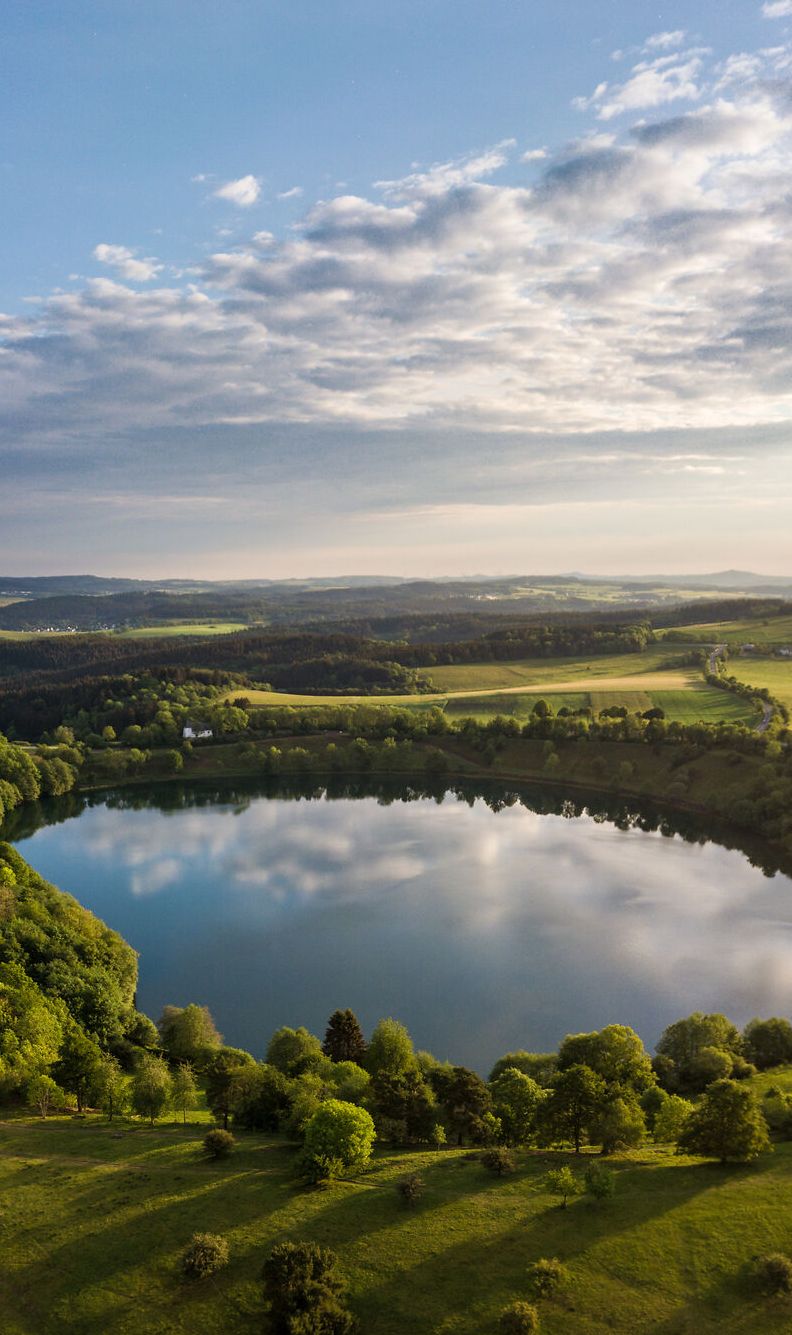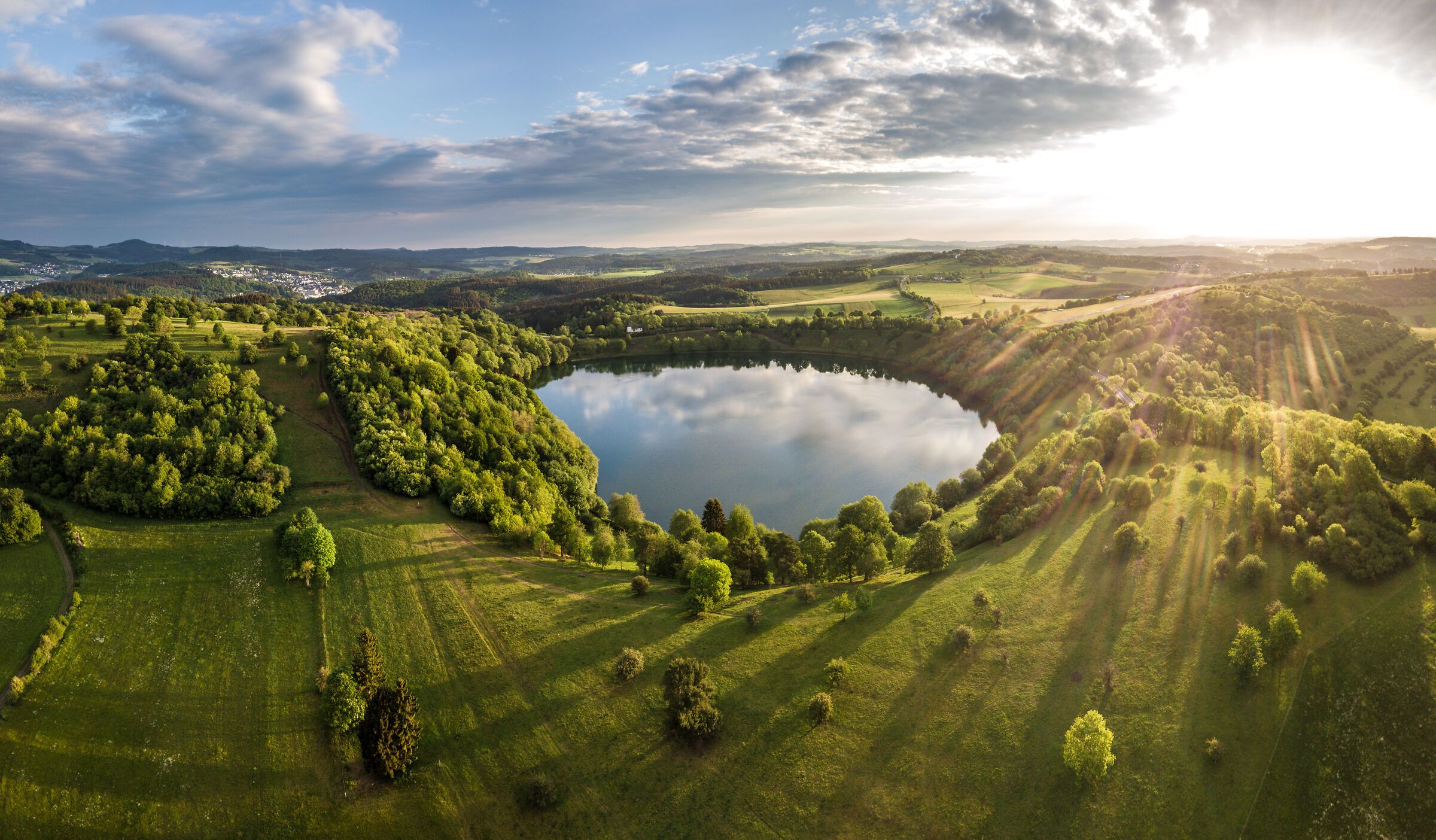

The power of fire
When fire and water meet, things get explosive. So explosive that magma is shot upwards and violent explosions blow holes in the landscape. In the land of volcanoes, which covers the south-eastern and central part of the Eifel, these times are fortunately long gone. The volcanic cones of the Eifel rise peacefully into the air and the banks of the maars are reflected in the water as the waterfowl make their circles.
The wild times of the Eifel began around 45 million years ago. The strong expansion of the earth's crust erupted - the first volcanoes were formed in the Eifel. It bubbled and cracked again and again, most recently a good 13,000 years ago when Lake Laach was created by the eruption of the Laacher See volcano. The mineral and carbon dioxide springs, known as Drees, continue to bubble beneath the surface. The sparkling Gerolsteiner water is enjoyed far beyond the borders of the Eifel.
UNESCO Geopark Vulkaneifel or National Geopark Laacher See - volcanism is not only well researched, but can also be experienced by people. Rangers guide you through the geopark, the Maar Museum focuses on the formation of the maars and in the Strohn Volcano House you can experiment and try things out to get to the bottom of volcanic phenomena.
Which destinations you shouldn't miss in the land of volcanoes: